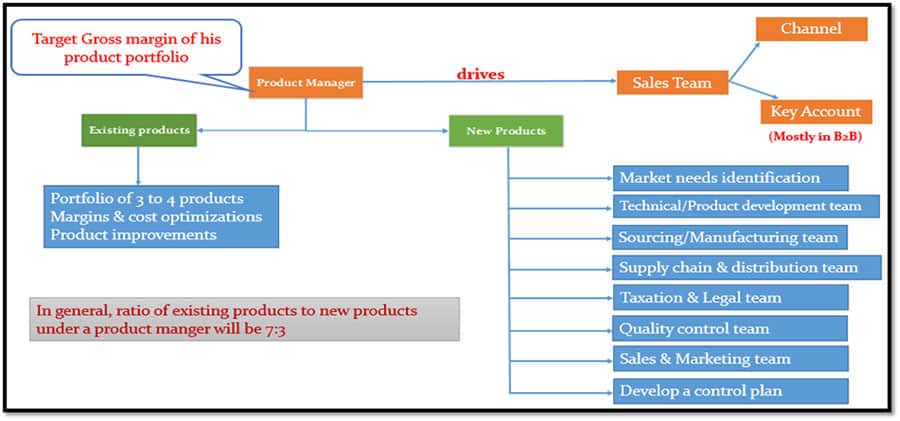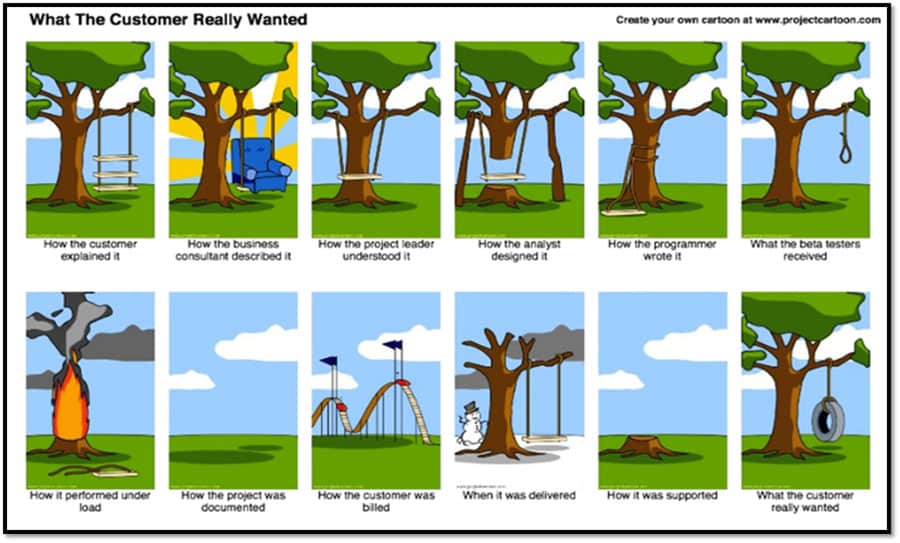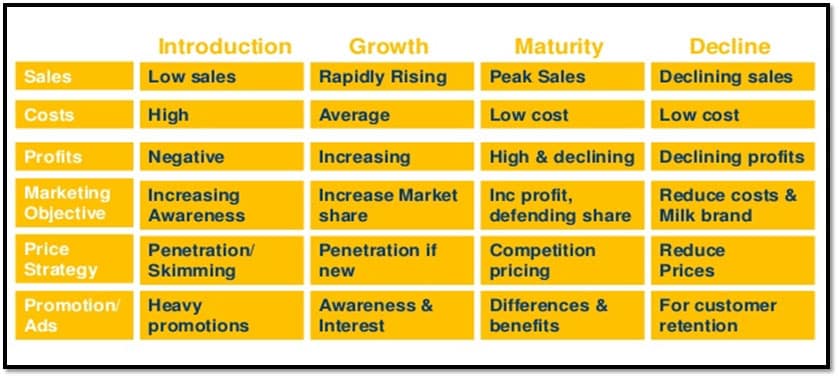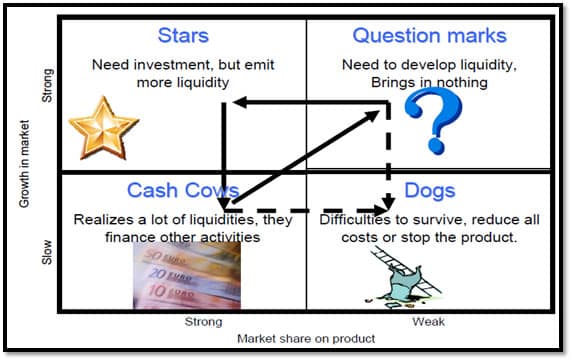Anatomy of Product Portfolio Management

What a Product Portfolio Manager Does?
A product manager handles a portfolio consisting of existing and new product categories (Exhibit 1).
Exhibit 1: Role of a Product Portfolio Manager
The main focus while managing existing products is on cost optimization, margins improvement and customer perceived value enhancements to meet the evolving customer needs. For new product development, the rigorous stage gate process (Exhibit 2) starts with identifying the need(s) for initiating such a launch. For new product development, the product manager has to coordinate with different teams which work as per varied objectives and KPIs; and have to get them aligned towards achieving the arduous goal of successful product development and launch.
The key activities involved includes:
Exhibit 2: Stage Gate Process for New Product Development
- Market needs identification: Product manager spends most of his time on the field. He interacts with the sales workforce, meet customers and other stakeholders to understand their established and/or unarticulated needs. By blending the key concepts of marketing like marketing mix models with strategy concepts pertaining to market attractiveness, the product launch idea is formulated and incubated. This idea further goes through a gate review process.
- Prototyping the idea: Product manager meets technical/production team with the idea and asks them to develop a prototype of this idea. Successful prototyping largely depends on the clarity with which the product manager is able to communicate the vision behind the new product launch strategy. This is generally an iterative process as the production team keeps coming back for review and discussion till the prototype is finalized. The logic is to ‘fail fast’ so as to avoid any prospective failure going forward.
- Sourcing the requirements: After conducting the feasibility assessment of the prototype, project manager contacts the sourcing team for manufacturing the product in the required quantity (determined using forecasting). Sourcing team analyses the prototype and comes back with their constraints such as expertise, capacity etc. if any. Otherwise, they develop the product lot as per the requirements.
- Facilitating effective distribution: Once the manufacturing of the product is completed, product manager contacts the supply chain team for effective distribution of the newly launched product.
- Seeking clarity on legal issues: Product manager meets taxation and legal team to discuss necessary terms & conditions. This involves analysing the tax structures of different states which is instrumental in taking decisions pertaining to pricing strategies.
- Ensuring sustainable quality promise: Product manager meets the quality/TQM teams which are responsible for quality checks done for all the products going out of the factory. This is to identify if the existing quality checks and standards can be applied to the new product and to design the new quality check processes if needed.
- Driving the sales & marketing teams: Product manager drives the sales team in achieving the target gross margin. He guides the marketing team in designing the promotional campaigns, discounts/offer schemes etc. The product manager continuously monitors the sales of the new product and collects feedback from the sales team.
- Designing a control plan: Product manager develops a control plan loaded with the forecasts, target gross margins and sales, activities planned (Gantt chart), checklist etc. This is useful in monitoring the sales of the newly launched product. Generally, it is developed for a time period of three months.
Despite following a rigorous stage gate process towards designing new products, the mortality rate of newly launched products is quite high (48% as per R.G.Cooper) [1] which can be a worst nightmare for a product manager (Exhibit 3).
Exhibit 3: A Product Manager’s Worst Nightmare [2]
The Product Manager’s Toolkit
Good reputation and right positioning of the brand is the most important asset for a product manager of any firm. Higher margins can be generated by leveraging the brand name. However, it is imperative to deliver best quality products to the customers. This is especially so, in case of new product launches. The new product launch should aim to enhance the aura of the existing brand in the mind of the customer. Strategic promotions can be initiated for supporting the new product launch depending on the product category, product type, target customers etc. For new products, promotions can be done by leveraging the umbrella brand name until there is sufficient awareness created about the newly launched product among the targeted customers, channel partners and other stakeholders. In case of B2B products, influencers can be used for promoting the new product launches. The impact of pricing is encompassing as besides effecting the bottom line and top line of the company, it also effects the profits of channel partners and the brand image. The company can strategically design the pricing policy of the product portfolio based on rigorous pricing analytics tools like price waterfall analysis, which consider customer perceived value to prevent profit leakages. A set of guidelines pertaining to target gross margins can be incorporated in the strategic pricing plan keeping in mind the product life cycle stages of the product portfolio (Exhibit 4).
Exhibit 4: Pricing Strategies Aligned to Product Life Cycle
While managing the existing and new product portfolio, the product manager has to be mindful about the varied target margins (Ex: in a three products portfolio, the target profit margins from different products may be 30%, 20% and 40% depending on the dynamics of the market each belongs to) set by the top management while taking strategic decisions pertaining to product portfolio. For this, the product manager can constantly monitor the performance of the product portfolio using BCG (Boston Consulting Group) Matrix (Exhibit 5).
Exhibit 5: Boston Consulting Group Matrix. 3
“When we create stuff, we do it because we listen to the customer, get their inputs and also throw in what we’d like to see, too. We cook up new products. You never really know if people will love them as much as you do.”- Steve Jobs
1. In his book titled “Winning at New Products: Creating Value Through Innovation”
2. www.ChrisDouglas.com
3. https://www.bcg.com/publications/2014/growth-share-matrix-bcg-classics-revisited.aspx
Written by: Dr Jyoti Kainth, Assistant Professor at Institute of Management Technology Ghaziabad, India
Add CEOWORLD magazine to your Google News feed.
Follow CEOWORLD magazine headlines on: Google News, LinkedIn, Twitter, and Facebook.
This report/news/ranking/statistics has been prepared only for general guidance on matters of interest and does not constitute professional advice. You should not act upon the information contained in this publication without obtaining specific professional advice. No representation or warranty (express or implied) is given as to the accuracy or completeness of the information contained in this publication, and, to the extent permitted by law, CEOWORLD magazine does not accept or assume any liability, responsibility or duty of care for any consequences of you or anyone else acting, or refraining to act, in reliance on the information contained in this publication or for any decision based on it.
Copyright 2024 The CEOWORLD magazine. All rights reserved. This material (and any extract from it) must not be copied, redistributed or placed on any website, without CEOWORLD magazine' prior written consent. For media queries, please contact: info@ceoworld.biz
SUBSCRIBE NEWSLETTER













